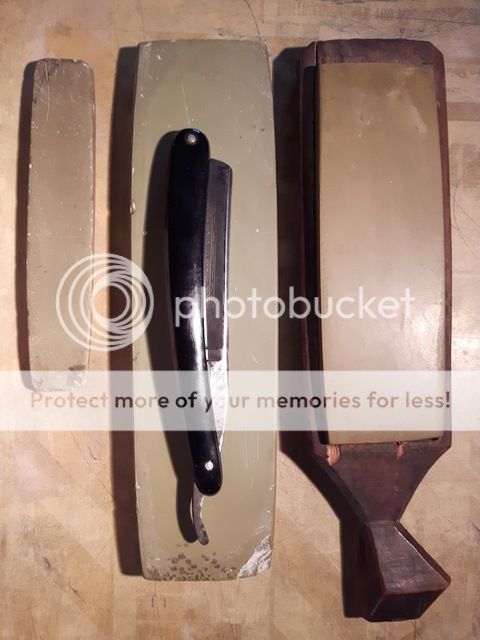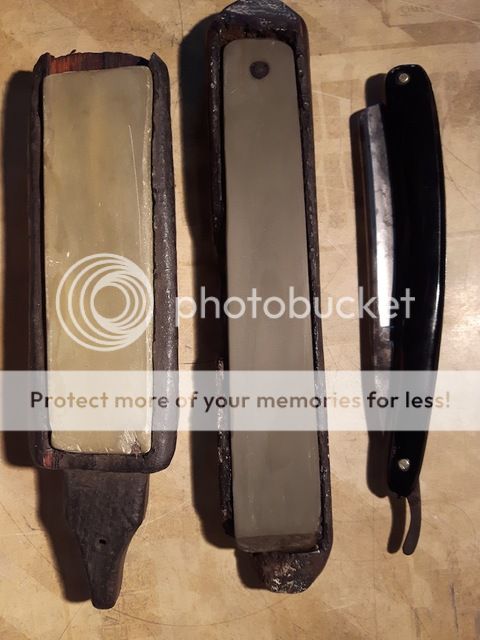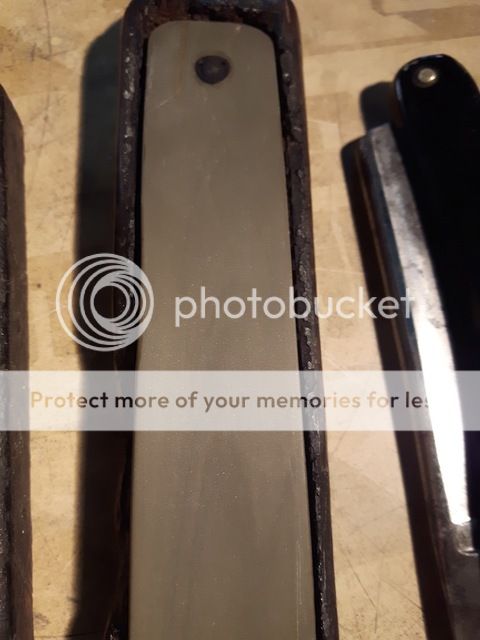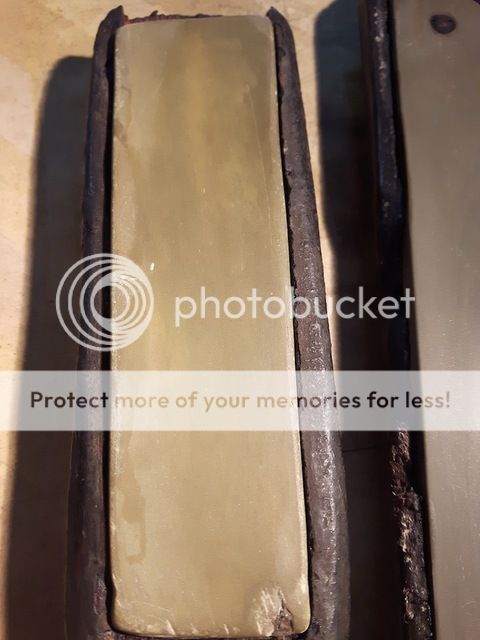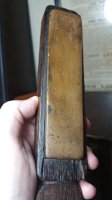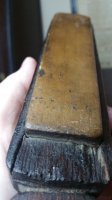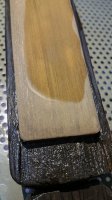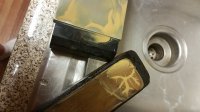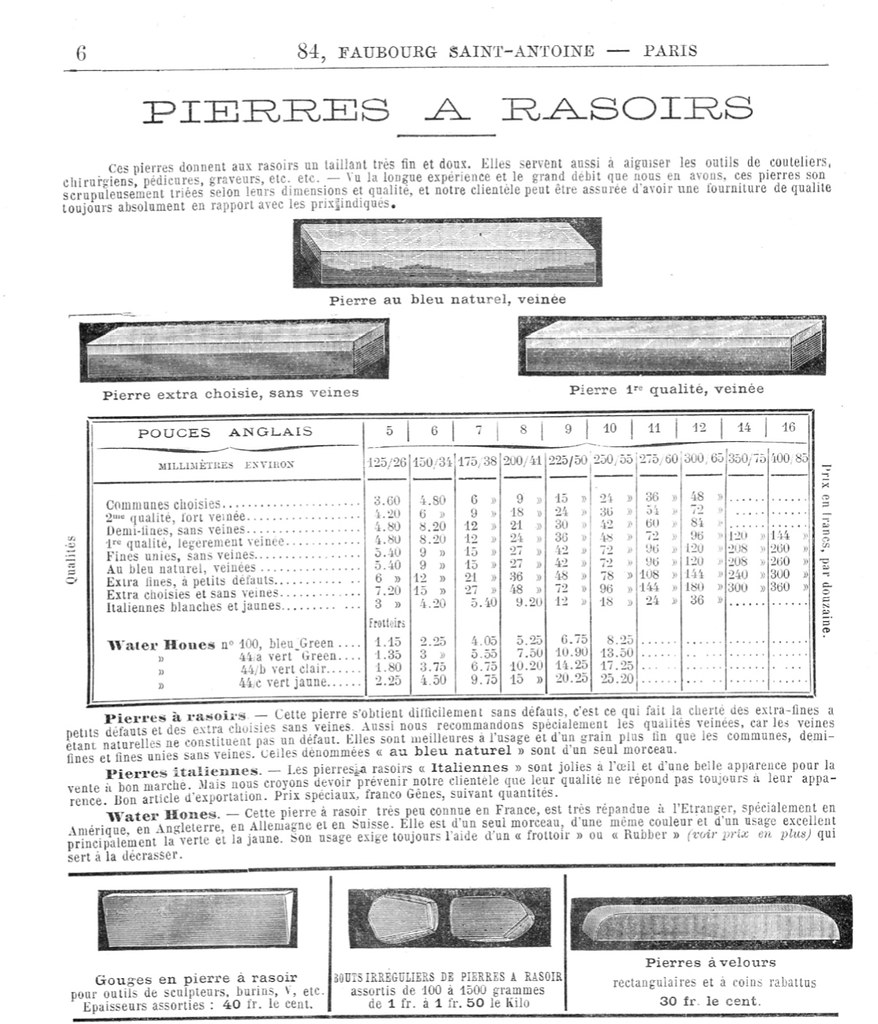SliceOfLife said:Bushdoctor any updates on your stone? Used it? Found out any more information about it?
Unfortunately no, I haven't found the time to investigate more on this stone, and also no time for playing with it.
Meanwhile, I've bought another one thinking that was the same stone, but this one is an hard, glassy, stone. The one with black dots is very soft compared to this one. I hope to find some good info about this stone, soon or later. I'm actually lapping a mountain of stones, and also continue the research of old stones quarries, in the last months I'm focused on the Special Stone / La Lune.
This is my last acquisition.







